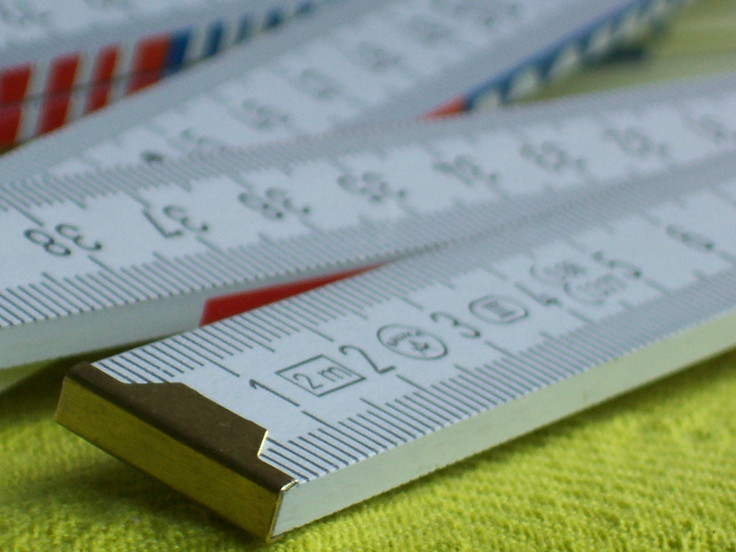America, Liberia, Myanmar: The Anti-Metric System Holdouts

America’s reluctance to convert to the metric system was once famously lampooned by television’s longest-running animated sitcom, "The Simpsons," in an episode from way back in the Nineties.
During a town hall meeting, elderly curmudgeon Abe “Grampa” Simpson stands up in outrage at the mention of the metric system, the international system of measurement now officially adopted by all but three nations in the world: Myanmar (formerly known as Burma), Liberia -- and the United States.
“The metric system is the tool of the devil," Abe Simpson said. "My car gets 40 rods to the hogshead and that’s the way I likes it!”
Grampa Simpson’s stubborn adherence to antiquated (very antiquated -- the hogshead is a British measurement from the 1400s) measurement terms may be funny, but it hints at something more poignant: The U.S. is out of sync with the modern world by sticking to units of measurement based on the British imperial system -- which, it should be noted, was abandoned by the United Kingdom itself long ago.
But much has changed since that episode first aired in 1995, and even then the U.S. was already well on its way then to integrating metric units into its culture.
“It’s inevitable that the U.S. will be on the metric system someday,” said Don Jordan, professor of mathematics at the University of South Carolina and a senior member of the U.S. Metric Association, a non-profit group that advocates for the adoption of the metric system in America.
“It’s already heading in that direction and it’s not going to turn back around,” he said.
While some form of the metric system has been around since it was invented by France in 1799, the modern form, known as the International System of Units, or SI, was introduced in 1960.
In 1968, following the formal adoption of the SI system by most countries -- including key U.S. trading partners like the UK and Canada -- Congress authorized a three-year study to examine the feasibility of the country, officially converting its measurement system to SI units, or “metrication,” as the process is technically known.
The study found that in many cases, many private U.S.-based corporations that do business with other countries have already adopted the metric system. It also found that a gradual transition from the current system to the metric system would be in the best economic interests of the U.S.
In 1975, President Gerald Ford signed the Metric Conversion Act into law, formally adopting the metric system as the “preferred system” of the U.S. for trade and commerce.
The Act also established the U.S. Metric Board, which was tasked with educating the American public about metrication. The USMB was later defunded by President Ronald Reagan in 1982 and is now defunct.
Nevertheless, the metric system has increasingly been integrated by state agencies, while the government has encouraged but not required metrication in the private sector.
While metric system advocates like Jordan are confident that metrication in the U.S. is moving forward, he points out that the American public education system remains an area where progress has stalled.
Jordan said that while public school curricula include both measurement systems, most teachers are not properly trained to use the metric system, and as a result they usually place greater emphasis on the customary measurement system in the U.S. than on the metric system.
“Teachers are not being taught how to use the [metric] system, and so the problem is being recycled in the U.S.,” Jordan said.
The USMA promotes metric system training programs for teachers nationwide, but funding for such programs is generally limited to fees and support from private companies such as metric ruler manufacturers.
Jordan would like to see a greater push from within the Department of Education to promote metrication but doesn't think a mandate would work.
He believes the process would benefit from greater coordination between the DOE, state governors and superintendents, but that there is currently little political incentive to organize such an effort.
“Nobody is going to get elected to Congress by pushing for the metric system,” Jordan said.
Still, public pressure may lead to the issue of metrication being revisited by the U.S. government. In December, a petition was submitted to the White House online that requested that the metric system be adopted by the U.S. as its official measurement system.
The petition surpassed the 25,000-signature threshold by the Jan. 30 deadline by 17,000 signatures, and it will eventually receive a written response by the White House as a result.
“Why should we convert to using the Metric System?” the petition said. “Because it's superior, less convoluted -- everything is ordered in units of tens, while the chaotic arrangement of the Imperial System slows things down for us -- not only in terms of education, but also businesses, science, foreign relations, and daily life.”
© Copyright IBTimes 2024. All rights reserved.





















